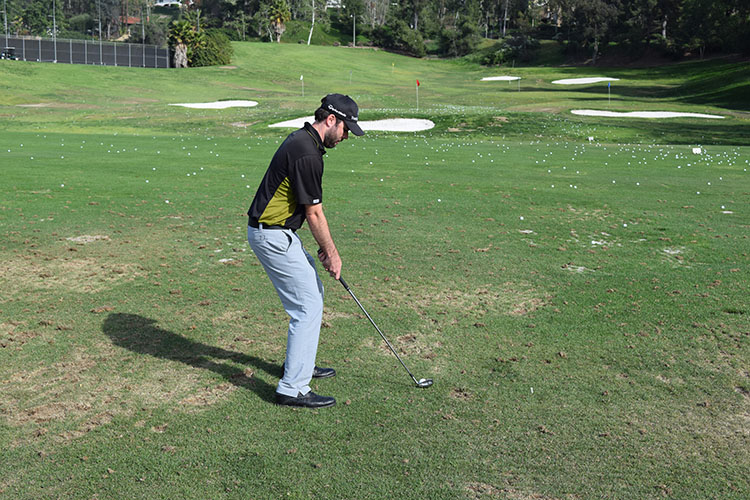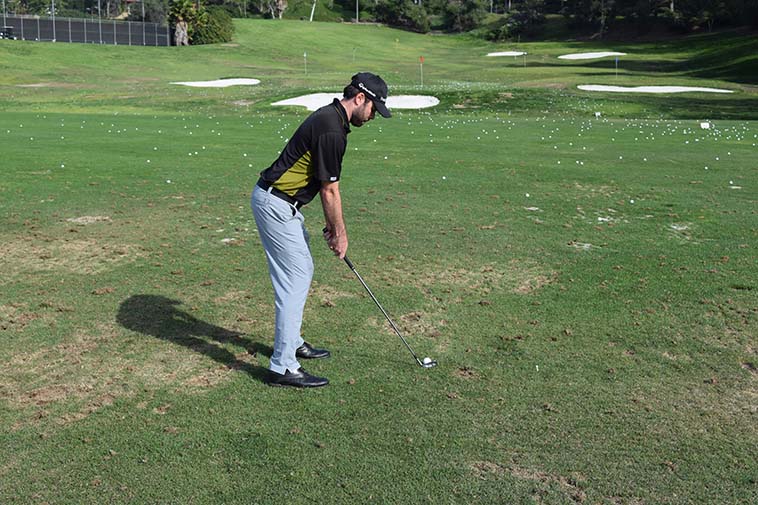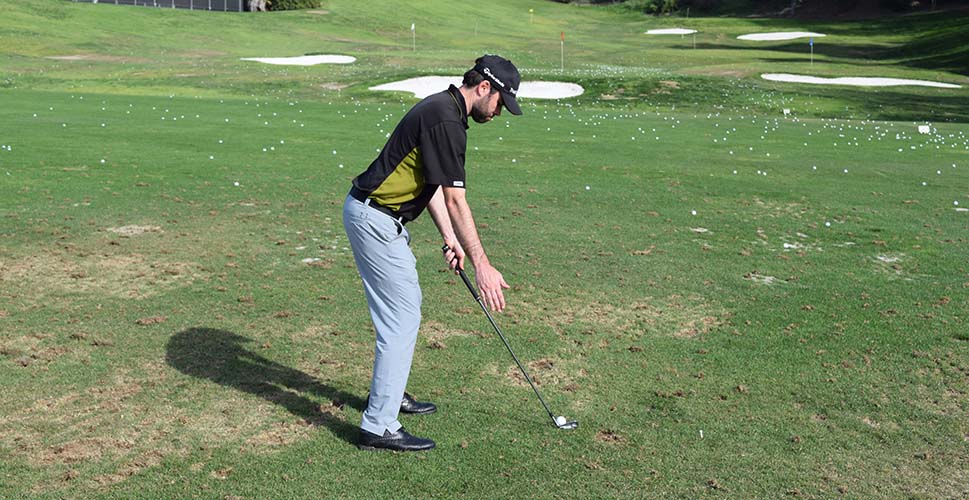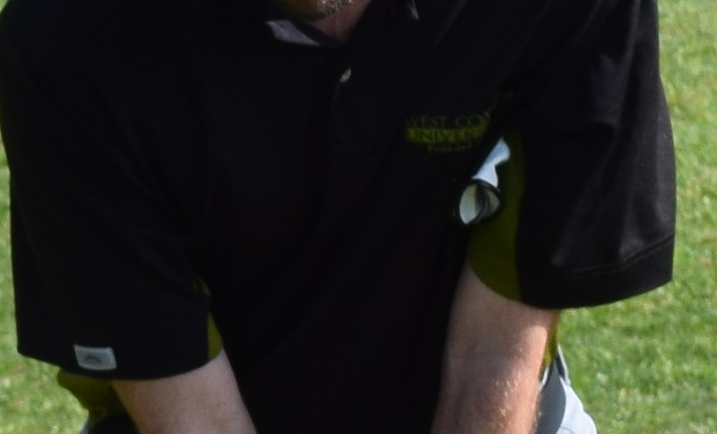What is a Shank?
A shank occurs when you strike the golf ball on the hosel of the club. The hosel is the part of the club that connects the shaft and club head together. The result will be a wild golf shot that squirts to the right (for righties) and slices even further right.
To understand the solution we must first understand the cause of the problem. Someone who is struggling with the occasional or even frequent shanks will also struggle with pulling the ball when they catch it solid. That is because shanks and pulls are both caused in part by a swing path that is too far from outside to in. A swing path like this effectively shrinks the size of your clubface. When you manage to catch the clubface the ball always starts left. But catching the ball solid is very difficult because the hosel is exposed to the golf ball for a prolonged period of time. Often times you will shank it. It can be the most perplexing thing when you don't understand the fundamentals. Watch this slow motion video to see what we're talking about.
Posture and Balance

During your swing, your weight will always go where it is NOT at address. The outside in swing path that causes a shank is almost always related to poor posture and balance at address. The weight is too much on the heels of your feet at address. When the weight starts back on your heels, it moves towards your toes as your body tries to remain on balance while you swing. As the weight moves out toward your toes, the club swings out that way too creating an outside in swing path. So, believe it or not, the more you sit back on your heels at address and try to prevent the shank, the more your weight goes forward to your toes on the downswing making it worse.
 Perform these simple posture checks to tackle the problem:
Perform these simple posture checks to tackle the problem:
- Stand Tall - Make sure when you take your posture you stand tall with your chest out and back fairly straight.
- Moderate Knee Flex - Most people stand way too straight legged or bend their knees way too much at address. Your knees should be slightly flexed at address. Not so much that you're off balance but enough to give you the ability to use your legs for power. Use a mirror to check your knee flex. Your knees should fall directly in line with the balls of your feet.
- Weight on the balls of your Feet - When the weight is properly distributed in your feet at address, you should be able to lift your heels off the ground relatively easily. You should also be able to wiggle your toes fairly easily as well. This will ensure that you are properly balance and ready to move well.
Improve Your Swing Path
In most cases, if you correct your posture and balance you will fix a shank. However, if you are still hitting a few hosel rockets, your swing path may be off. If your swing path is still causing you to shank it there are a few things you can try that are all different ways to address the same problem. Hopefully something will click for you and you will start attacking the ball from the inside. By attacking the ball from a better swing path you will be sure to stop shanking it.
- Keep the Clubhead in Front of Your Chest - Once you have established the proper posture, you want to make sure the club head stays in front of the center of your chest going back. Usually if you are shanking the ball, the club is getting behind you or inside your hands at the start of the backswing. A good way to feel the club staying in front of you is to put the butt of the club in your belly button and grip down on the club. Next, from a golf posture keep the triangle of your arms and club going back in the takeaway while the club stays in your belly button. You should feel that your arms and chest are connected as you keep the club in front of your body going back.
- Keep the palm of your right hand facing the target as long as you can at the beginning of the backswing.. One of the biggest contributors to the shanks is when people roll their hands open at the beginning of the backswing. The club face becomes too open and gets too far inside their hands and, to compensate, their body corrects by coming over the top of it and swinging too far from outside in. Keeping your right palm facing the target is a simple solution for this costly swing flaw.
- Keep your left arm glued to your side - If you keep your left arm pinned to your side on the downswing you will be able to swing more from the inside. A disconnected lead arm is unacceptable.
- Hit balls with a glove under your left armpit - This will allow you to practice the sensation without really having to think about it. Keep your swing 3/4 length on each side to make it a little easier. Then simply let your body react and groove a proper swing path.
- Another good drill to help you with this is place a head cover on the other side of the ball farthest from you. Set the head cover as close to the ball giving yourself just enough room to take the club back and through. In the downswing, your only swing thought should be to hit the ball and miss the head cover. Your arms will feel like they stay closer to you on the way down and if you miss the head cover you can’t shank the ball. After a few shots, take the head cover away and try and feel the same as you did with the drill.

